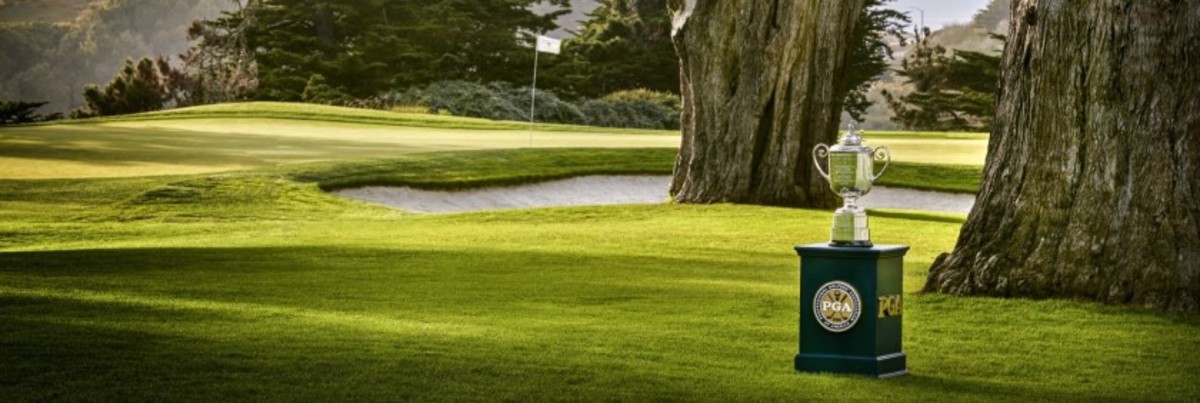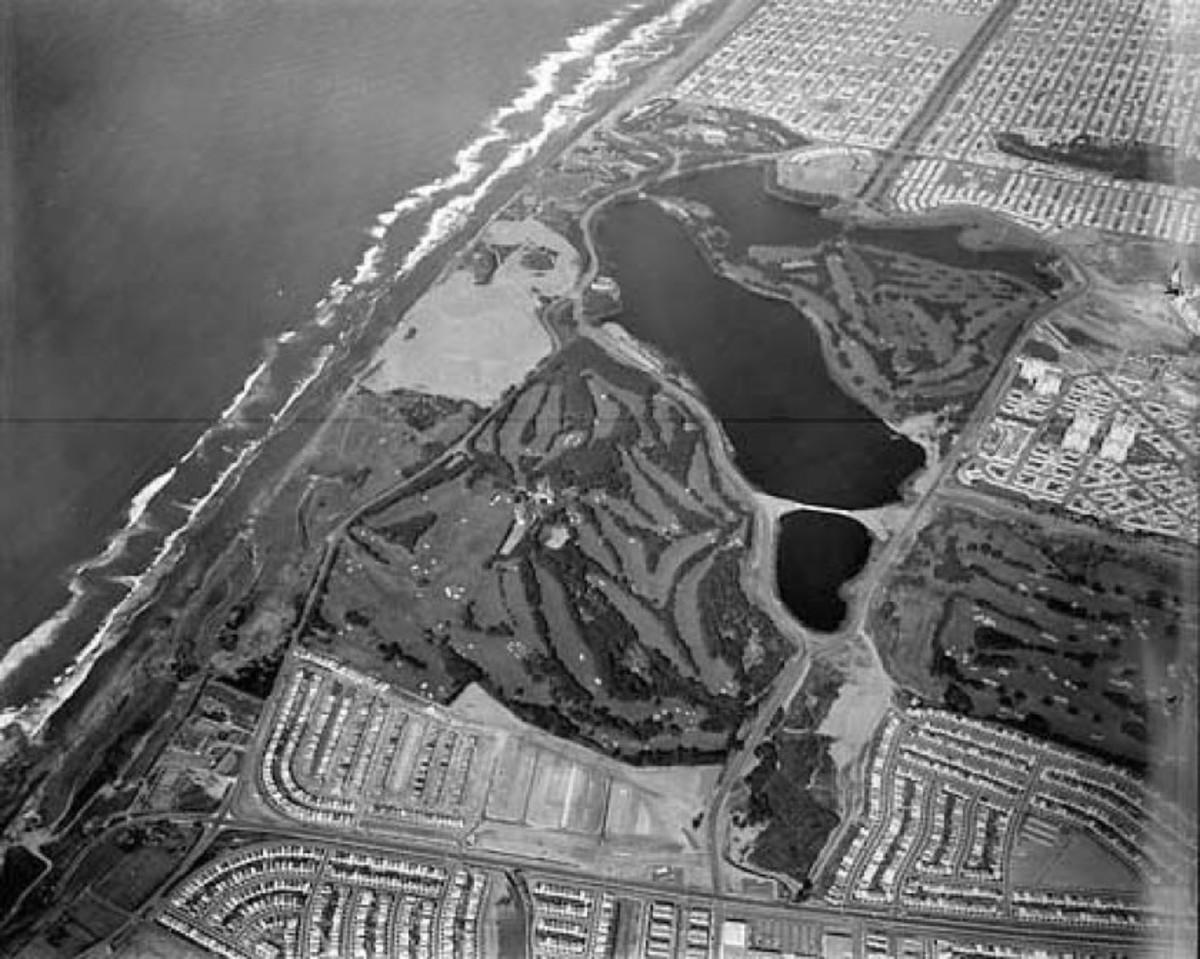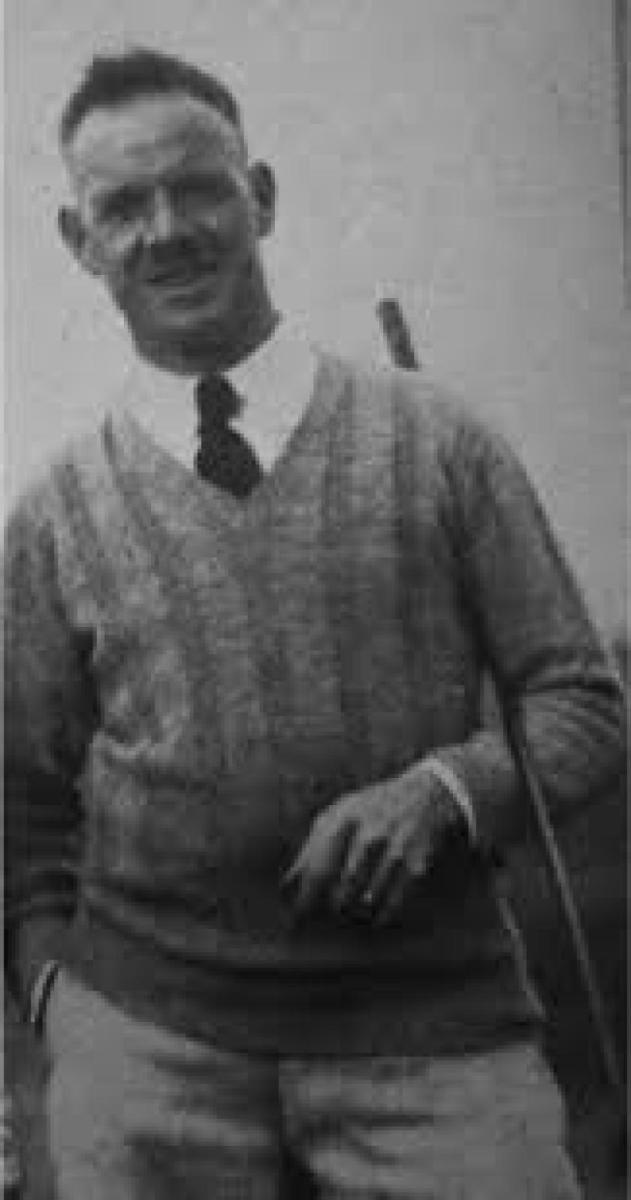PGA elevates work of TPC Harding Park design duo

On a popular website promoting this week’s PGA Championship, there is text that touts TPC Harding Park’ s original layout as “designed by world-renowned golf architects William Watson and Sam Whiting in 1925.” There is no world in the universe where Watson and Whiting are renowned, certainly not this one. Undoubtedly, however, both men deserve to be much better known and much more respected.
Among the many complicating factors in illuminating the Watson-Whiting connection and legacy is the century-old haze of incomplete records and faded memories. Respected historians disagree on who did what and on how they arrived there. Club histories clash with other club histories. New information surfaces, only to be replaced by different data.
Here’s what’s certain, along with a bit of conjecture.
That’s Watson, William Watson
Perhaps it’s a stretch to label William Watson, international man of mystery. Such a tag might fit, however, given how little is known about one of the Golden Age’s most prolific and successful course designers. By several accounts, Watson planned, designed or redesigned more than 100 golf courses.
We do know this: Don’t call him Willie. For murky reasons, many of architecture’s top scholars and chroniclers have long credited his achievements as Willie Watson designs, but other historians subsequently refuted the use of Willie. They pointed out that even his business advertisements of the day referred to William. So, too, did fellow architect George C. Thomas Jr. in his contemporaneous book, Golf Architecture in America: Its Strategy and Construction, published in 1927. His obituary as well refers simply to William Watson — no middle initial.
“Never once did he spell his name ‘Willie,” said David Mackesey, club historian at California’s Diablo Country Club — a Watson design — and who also serves as the club historian at Scotland’s legendary Carnoustie. “’Willie’ was considered a working-class name. He was anything but that. He was a very educated man. While some may have called him Willie, he never did.”
Watson was born March 31, 1860, in a Scottish town 8 miles from St. Andrews. His father, John, was a member of the Royal & Ancient Golf Club of St. Andrews. William became a highly skilled player, winning tournaments at both St. Andrews and at his nearby home course, Cupar Golf Club. He also studied at St. Andrews University. Undoubtedly, Old Tom Morris and the Old Course influenced Watson in his course design career.
In 1898, through family connections and introductions, Watson sailed to America, to design a new golf course for the Minikahda Club in Minnesota and to become its head golf professional. After that early success and subsequent design triumphs in California during the first decade of the 20th century, Watson eventually established design offices in New York, Chicago and Los Angeles. Along the way, he created Hillcrest in Los Angeles, site of the 1929 PGA Championship and two future U.S. Open venues, Interlachen (1911) in suburban Minneapolis and the Lake Course at San Francisco’s Olympic Club in 1924.

A number of his other best-known designs have hosted major USGA and PGA Tour events, including San Francisco’s Harding Park in 1925, San Diego Country Club, the original Brentwood Country Club, Diablo Country Club, Berkeley Country Club and Orinda Country Club. Michigan’s Belvedere Golf Club is probably his greatest surviving work, while his true masterpiece, the 1924 design of the Olympic Club’s Ocean course mostly disappeared a few years after opening due to storm-induced erosion and landslides. An amazing quartet of seaside holes never was successfully rebuilt.
Architect Todd Eckenrode, a member of the American Society of Golf Course Architects, and his Origins Golf Design team have restored six courses where Watson was the original designer. He pointed out two traits that distinguish a Watson design.
“Number one, Watson utilized the bold, often severe features of the existing terrain beautifully in his routings,” Eckenrode said. “He wasn’t afraid to play along a sweeping hillside or up and over a ridge. He understood how to align a golf hole that would take maximum advantage of the contours and kickslopes and would reward a player who could figure that out. He had a wonderful way of using diagonals, of rewarding the player who recognized the proper angle.
“Number two, he never practiced a cookie-cutter approach to design. All of his courses were different. His bunker style was totally different from course to course. He was terrific in using the land’s natural features, but he was also skilled at creating features when needed. For example, at Orinda and Diablo, two country clubs in Northern California, he brought in the tractors and created wonderfully irregular greenside mounds that tied in superbly to the green contours. Just off the green, between the mounds, he constructed closely mown swales that pull the ball away from the green. It inevitably led to interesting recovery shots.”
So while Watson earns kudos for his skilled routings, his green constructions were similarly esteemed. As Country Club magazine wrote in 1925, “(Watson) holds the belief that a course is more interesting if every green has a character all its own, giving the player something besides the flag to rest his eye on in approaching the hole.”
Mackesey astutely observed that Watson’s evolving style was likely tied to technology of the time.
“Remember, that Watson spanned two generations of architecture,” he said. “He was prolific pre-1920 and also post-1920. In those early years, he didn’t have motorized vehicles to take care of the course. Pre-World War I, you didn’t use severe elevations because it was too hard to maintain. After 1920, he began utilizing bolder parts of a property, with elevated tees, elevated greens and the occasional blind shot.”
So why isn’t Watson better known? Eckenrode theorizes that much of Watson’s outstanding work was eclipsed by other designers.
“A lot of Watson’s best work was done in the late teens, early 1920s,” Eckenrode said. “There were a lot of great architects who followed in the mid- and late 1920s. He fell victim to clubs wanting to enhance or change what they had, so much of his really good work went away.”
“Most of what he did got changed or replaced,” concurred Mackesey. “He didn’t really leave a true signature. You end up with work that was quality, but no one built a pyramid around any one course he did so that people could drive by and look at it.”
In addition, nearly all of the important tournaments from 1900-1928, as well as the publications of the day, revolved around the East Coast, and to a lesser extent, the Midwest. The U.S. Amateur and the PGA Championship didn’t venture west until 1929, the U.S. Open until 1948. Up until then, great golf in California was more of a regional phenomenon than a national one.
Watson’s Minikahda played host to the 1916 U.S. Open and to the 1927 U.S. Amateur, won by Bobby Jones, but architects generally didn’t enjoy the celebrity they do today. Jones captured the U.S. Open at Interlachen in his Grand Slam year of 1930, but Watson’s course by then had been substantially redesigned by Donald Ross.
Watson’s myriad talents for creating golf courses were undeniable. From his earliest days of studying the Old Course at St. Andrews, he embraced a minimalist design philosophy, where golf holes were found and not built. He eschewed artificiality. Every bunker and mound he constructed had a purpose. Some shapes were simple, others more complex, but always he insisted on naturalness.
“A good rule is to stress the importance of fitting in all grading work to harmonize with the surrounding territory,” Watson wrote. He further asserted, “Mounds, slopes, grassy hollows, sand pits, all have their values in beautifying the setting of our greens and in giving them distinctive definition — if artificially arranged without appearance of artificiality.”
Watson eased out of the design business at the onset of the Great Depression, and passed away at age 82 at his home in Los Angeles.
Eckenrode put into perspective Watson’s place in the pantheon of designers.
“His name, his star, is certainly rising,” he said. “As we all got interested in architecture in the last decade or two, we’re finding these gems like Orinda, Diablo, Harding and Belvedere. I don’t think people had heard of Watson ten years ago and now he’s gone from a no-name to having some true gems out there. And that’s great. He deserves it.”
Sam Whiting: England’s Gift to San Francisco
Even less well known than William Watson — unless you’re an Olympic Club member — is Sam Whiting. The co-designer of Harding Park in 1925 was also the co-designer of the Olympic Club’s Lake course in 1924. Some authorities, including the Olympic Club itself, credit Whiting alone with designing 14 of the holes on the Lake course from the 1927 version through today, tweaks by Robert Trent Jones Sr. and Bill Love notwithstanding. Whiting was a legendary figure at the Olympic Club. Prior to that, however, he was part of a noble golf family that had tentacles throughout England.

Several prominent sources misidentified Sam Whiting as having been an English professor at Cal Berkeley. In fact, he was part of a remarkable family, one of seven brothers, six of whom were professional golfers and the son of a greenkeeper. Three generations of the Whiting family held the head professional’s job — for 77 years in succession — at southeast England’s Royal St. George’s Golf Club, host to 13 British Opens since 1894. Sam’s brother Fred served from 1911-1948, Fred’s son Albert from 1948-1970 and Albert’s son Cyril from 1970-1988. In Ian Fleming’s “Goldfinger,” James Bond rang the pro shop at fictional Royal St. Mark’s and asked for the pro, Alfred Blacking, who had a son named Cyril.
Whiting never attended or taught at Berkeley. However, from 1911-1921, he was the professional at England’s Ilkley Golf Club in Yorkshire where he happened to give lessons to an American named Robert Hunter, a leading political activist who was employed as a professor at Berkeley.
Hunter had just embarked on creating a new club in the San Francisco Bay Area, called Berkeley Country Club and he thought Whiting would serve not only as an ideal professional, but also assist greatly as a construction superintendent. After all, Whiting had apprenticed at England’s Royal Mid-Surrey under J.H. Taylor, a five-time British Open champion. He also learned invaluable lessons about turf maintenance from the club’s greenkeeper, Peter Lees, considered the finest golf course turf authority in the world.
At age 41, Whiting assumed his post at Berkeley Country Club in early May 1921, with the new golf course scheduled to open on July 1. Whiting assisted with the finishing touches on the design and construction — to the specifications of Hunter, who was the man behind the design, and to those of William Watson, the architect of record.

Unfortunately, a strike at Berkeley Country Club stopped work in late June 1921. Needing an income, Whiting found employ at the Olympic Club, when Berkeley graciously released him from his contract. He performed multiple roles as professional/clubmaker/superintendent, though he truly made his mark as construction superintendent for the two new courses the Olympic Club was building in 1922-23, the Lake course and the Pacific course (later to be known as the Ocean course).
The architect of record for Olympic’s two courses was William Watson, and Whiting built them. They were sensationally received when they opened in 1924, especially the stunning seaside Ocean course. As a result, when the City of San Francisco decided to create a championship municipal course on the opposite side of Lake Merced from the Olympic Club, they selected Watson and Whiting to serve as the respective architect and builder/construction superintendent.
Whiting and Watson never worked together again. Whiting stayed on at the Olympic Club as superintendent and only dabbled occasionally over the next few years in course design. Credits include the Sonoma Golf Club in 1928, which played host to the PGA Tour Champions’ Charles Schwab Championship from 2003-2009, Stockton Golf & Country Club and Nevada County Country Club, all in California.
Nevertheless, Whiting will always be inexorably linked to the Olympic Club. With the help of architect Max Behr, he created the current version of the Olympic Club’s Lake course in 1927, and it was Whiting who planted all of those gorgeous trees to bracket the fairways, creating one of the toughest test of driving in championship golf. He also nurtured its tees, fairways and greens through 1954, when poor health forced him to retire, just ahead of the club’s hosting the U.S. Open the next year. One source claims that Whiting quit his post because the club had retained Robert Trent Jones Sr. to revise the course prior to the U.S. Open, and that he objected to Jones’ plans. Whiting died in 1970 at age 91.
On the roles Watson and Whiting played in their co-designs, it’s clear that Watson was the architect and that Whiting was builder. “Watson was truly an architect,” Mackesey said. “He was a draftsman, who sat at a table and drew up intricate plans. He expected his plans to be followed to the letter in the field. He was educated and a straight shooter. Watson knew how to talk to formidable people. He made everyone feel comfortable when he walked in the door that they were going to get what they paid for.
“Whiting was not capable of that. He wouldn’t have been able to get across to a board the elements of architecture. You never saw a drawing from Whiting. But he did all the real work in getting the course built.”
With TPC Harding Park playing host to its first major this week, William Watson and Sam Whiting will share at least some of the spotlight. They both deserve it.
Sign up to receive the Morning Read newsletter, along with Where To Golf Next and The Equipment Insider.
